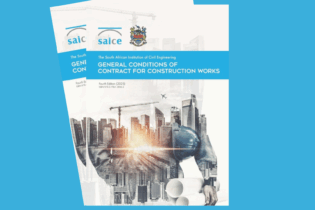Just how does an engineering consultancy ensure that its designs, procedures and recommendations made to clients are environmentally friendly and sustainable? All industries now claim to be going ‘green’, but what yardsticks are in place to measure compliance and what rules are, or are not, followed? It is not enough to think that going green is the right thing to do: to be environmentally conscious takes effort, it comes at a price and it needs to be a way of life, which means changing a mindset.
Most aspects of engineering comprise mature procedures, especially in the civils arena and while there are new materials and applications, a design engineer, from whatever discipline he or she hails, tends to be a conservative individual who uses tried and tested applications and materials, and for good reason. Mature engineers are in great demand the world over as these are mature and have the skills and experience that society needs for development projects.For many engineers, having the tried-and-tested materials is enough, but being asked now to investigate the way that those materials were made might come as a shock, or at the very least an irritation. So what if the rebar is made in a factory which is a major polluter or the uPVC piping manufacturing process emits carcinogens into the atmosphere? Is it my problem? The short answer is ‘yes’ it is, as being an engineer comes with a level of responsibility to society, and that responsibility is enforced by law. Engineers change communities and society as a whole, and should be proud of their expertise of being able to provide solutions confidently to developmental issues which improve the life of everyone in that society. It is not the doctors that improve the health of the nation but the engineers who design and project manage water treatment and sanitation plants and conveyancing structures, or are responsible for building power stations. So the argument that engineers should spearhead the drive for environmental sustainability is well founded, and all need to climb on board this particular bandwagon. They have the power to prescribe and make meaningful change! First off, consultants who – as built environment professionals – must acknowledge that they have a responsibility to the society in which they operate and need to be mindful of the impacts their activities have on people and their living environment, as well as on the legacy left for future generations. This means supporting and actively encouraging strategies and behaviours that demonstrate commitment to the long-term viability and sustainability of the projects they undertake. Consequently, this level of responsibility contributes, through projects, to society’s wider goal of sustainable development through eco-efficiency, effective resource management and project life cycle assessments. Don’t forget the beneficiaries. Social responsibility is all about managing a business in a way that enhances the positive and minimises the negative economic, social, and environmental impact of a firm’s activities, making sure that today’s actions do not limit the range of social, environmental, and economic options of future generations. Engineers and their firms need to be sensitive to the needs and concerns of employees, customers, communities, and society at large. While looking at the broader picture, don’t forget to start first at home by examining one’s own backyard: how can one engage and behave in your own working environment to make a difference to global sustainability?
Focus on waste minimisation, recycling, water, and energy saving, and reducing the company’s carbon footprint. Carry out audits at all the company’s offices to determine the company’s carbon footprint and how energy can be saved. From a practical standpoint, SSI has changed its information management system to ensure that before a project can be taken on, the project managers responsible have to complete a comprehensive questionnaire that probes the extent of their corporate project responsibility CPR commitment. This information is reviewed by an exco panel, and by a management committee from its parent company, DHV, in the Netherlands.
A similar procedure is followed at a project close-out, and the initial and final CPR documents are compared to reveal whether the policy was successful and if a meaningful contribution was made. “Our engineers and project managers are encouraged to propose green alternatives to clients, but going green will often involve additional costs,” says CEO Naren Bhojaram. “To incentivise clients to look at more ecofriendly project solutions, SSI will sacrifice up to 15% of the additional design costs, should the more sustainable solution be followed,” he said. Getting its 1 000 staff members in 22 offices around the country to buy into the policy required an extensive and ongoing communications strategy, which involved an internal advertising campaign featuring a comical frog character named IFA, which in Zulu means ‘legacy’. Frogs are environmentally sensitive creatures and usually the first to be affected by changes to the environment. IFA features prominently on inter-company communications, and visitors and staff entering SSI’s offices are faced with a banner declaring the company’s position and policy on corporate responsibility. Staff was encouraged to sign a pledge certificate, committing to the CPR principles as a reminder to ‘walk the talk’ and encourage others to do the same. The pledge certificate is prominently displayed in the reception areas of all SSI offices. Through its intranet and internal newsletters, staff members are recognised for their efforts towards sustainability as an incentive for others to do the same.by Robin Hayes, SSI Engineers and Environmental Consultants







